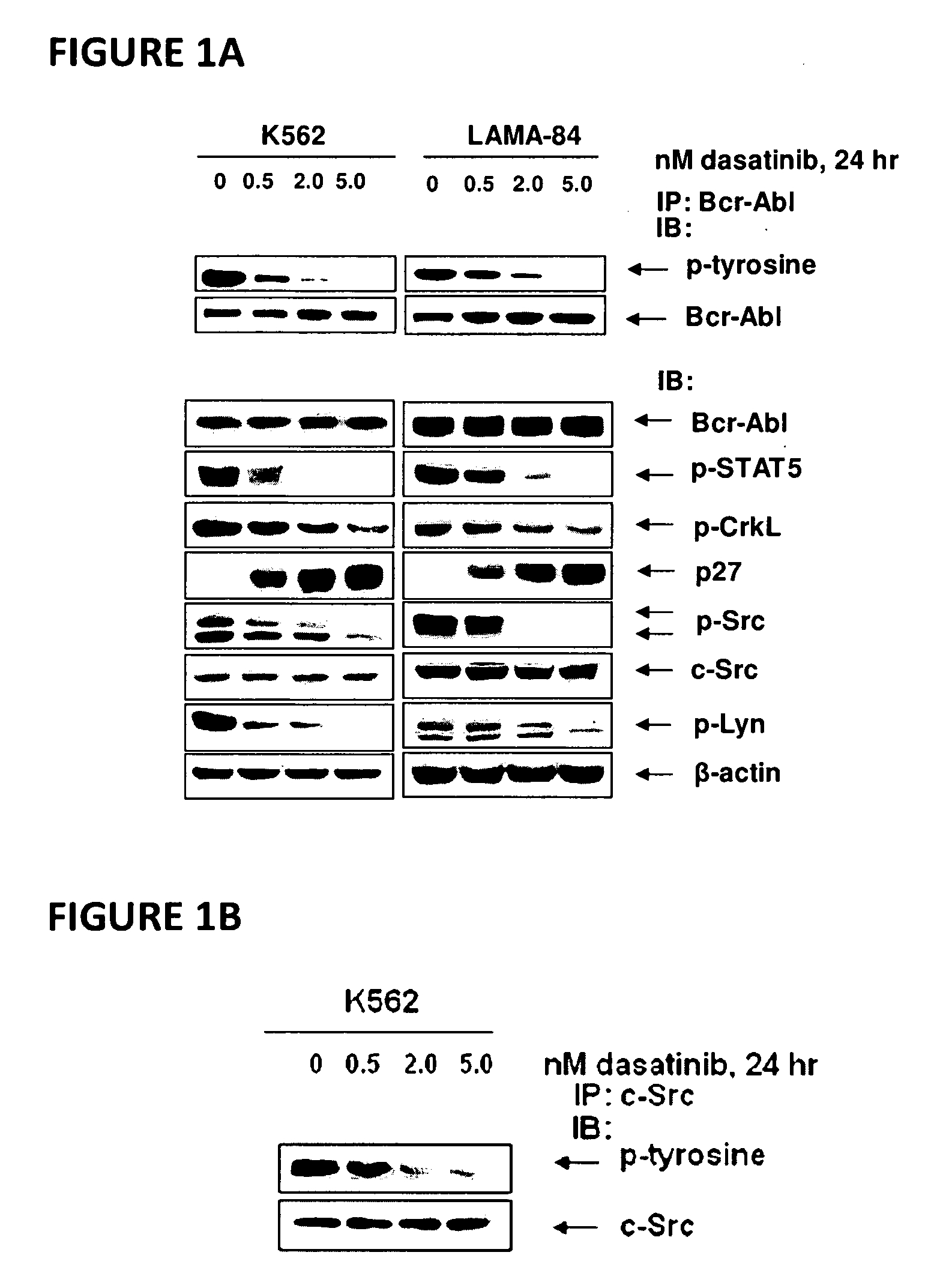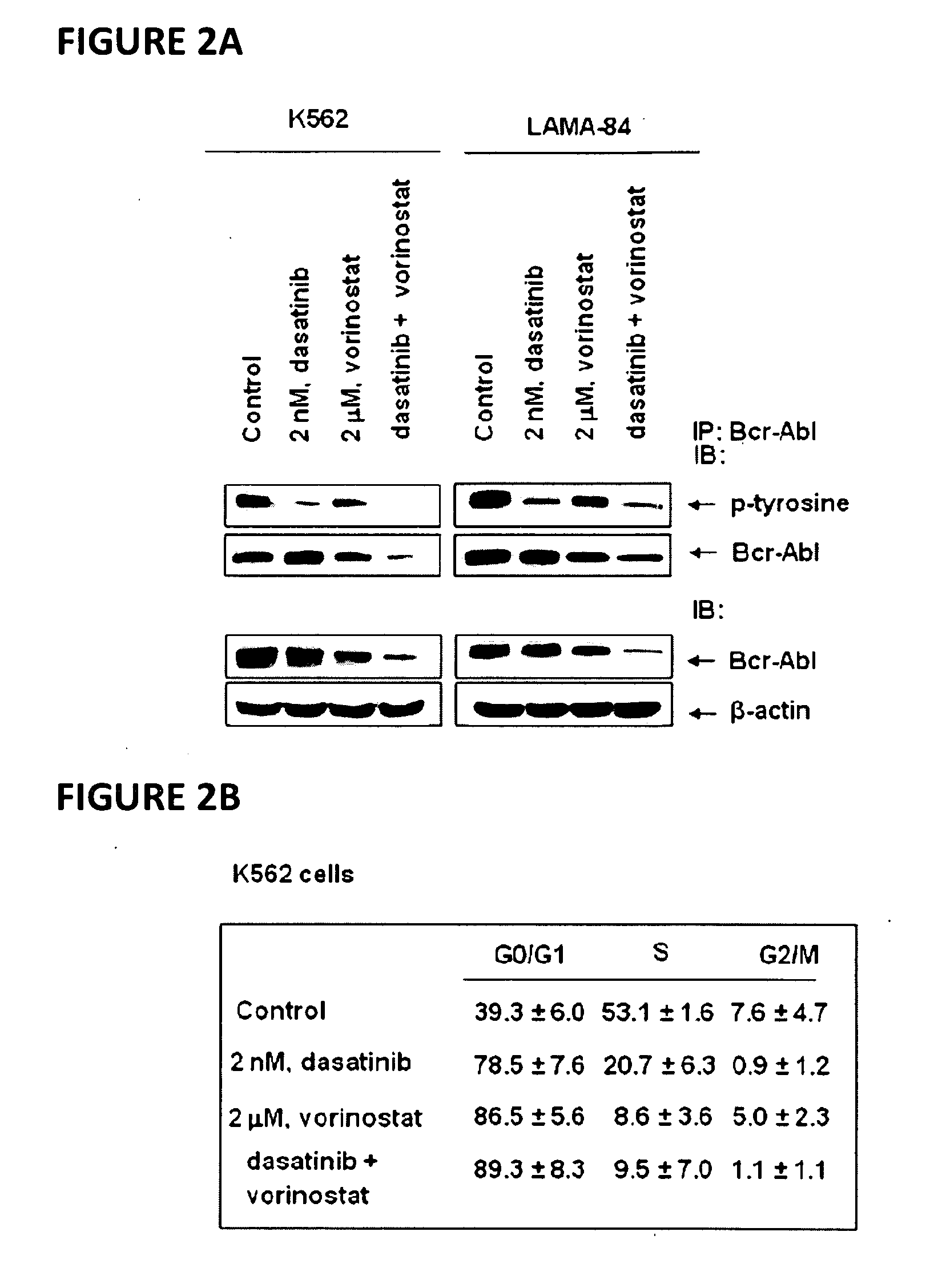Method of treating chronic myelogenous leukemia cells
a myelogenous leukemia and cell technology, applied in the direction of biocide, anhydride/acid/halide active ingredients, drug compositions, etc., can solve the problems of prolonging the survival, drug ineffective against, and increasing the resistance to imatinib mesylate (1m, gleevec®)
- Summary
- Abstract
- Description
- Claims
- Application Information
AI Technical Summary
Benefits of technology
Problems solved by technology
Method used
Image
Examples
example
[0066]Dasatinib (BMS-354825) was kindly provided by Bristol-Myers Squibb (Princeton, N.J.). Vorinostat (SAHA; suberoylanilide hydroxamic acid) was kindly provided by Merck (Boston, Mass.). Monoclonal c-Abl antibody, polyclonal anti-STAT5A / B, polyclonal anti-Lyn, polyclonal anti-c-Src, monoclonal c-Myc and goat polyclonal anti-Pim-2 were purchased from Santa Cruz Biotechnology (Santa Cruz, Calif.). Monoclonal anti-p-STAT5 monoclonal anti-p27, monoclonal anti-Bcl-xL and monoclonal anti-phosphotyrosine were purchased from BD Biosciences (San Diego, Calif.). Polyclonal p-AKT was purchased from Biosource Inc (Camarillo, Calif.). Anti-phospho-c-Src and anti-phospho Lyn were purchased from Cell Signaling Technology (Beverly, Mass.). Antibodies for the immunoblot analyses of p21, p-CrkL, CrkL, AKT, Bim, BCl-xL and ERK1 / 2 were obtained, as previously described (35-40).
[0067]Creation of BaF3 / Bcr-Abl, BaF3 / Bcr-AblE255K and BaF3 / Bcr-AblT315I cell lines.
[0068]Mutant Bcr-Abl containing plasmids w...
PUM
| Property | Measurement | Unit |
|---|---|---|
| resistance | aaaaa | aaaaa |
| concentrations | aaaaa | aaaaa |
| Resistance | aaaaa | aaaaa |
Abstract
Description
Claims
Application Information
 Login to View More
Login to View More - R&D
- Intellectual Property
- Life Sciences
- Materials
- Tech Scout
- Unparalleled Data Quality
- Higher Quality Content
- 60% Fewer Hallucinations
Browse by: Latest US Patents, China's latest patents, Technical Efficacy Thesaurus, Application Domain, Technology Topic, Popular Technical Reports.
© 2025 PatSnap. All rights reserved.Legal|Privacy policy|Modern Slavery Act Transparency Statement|Sitemap|About US| Contact US: help@patsnap.com



